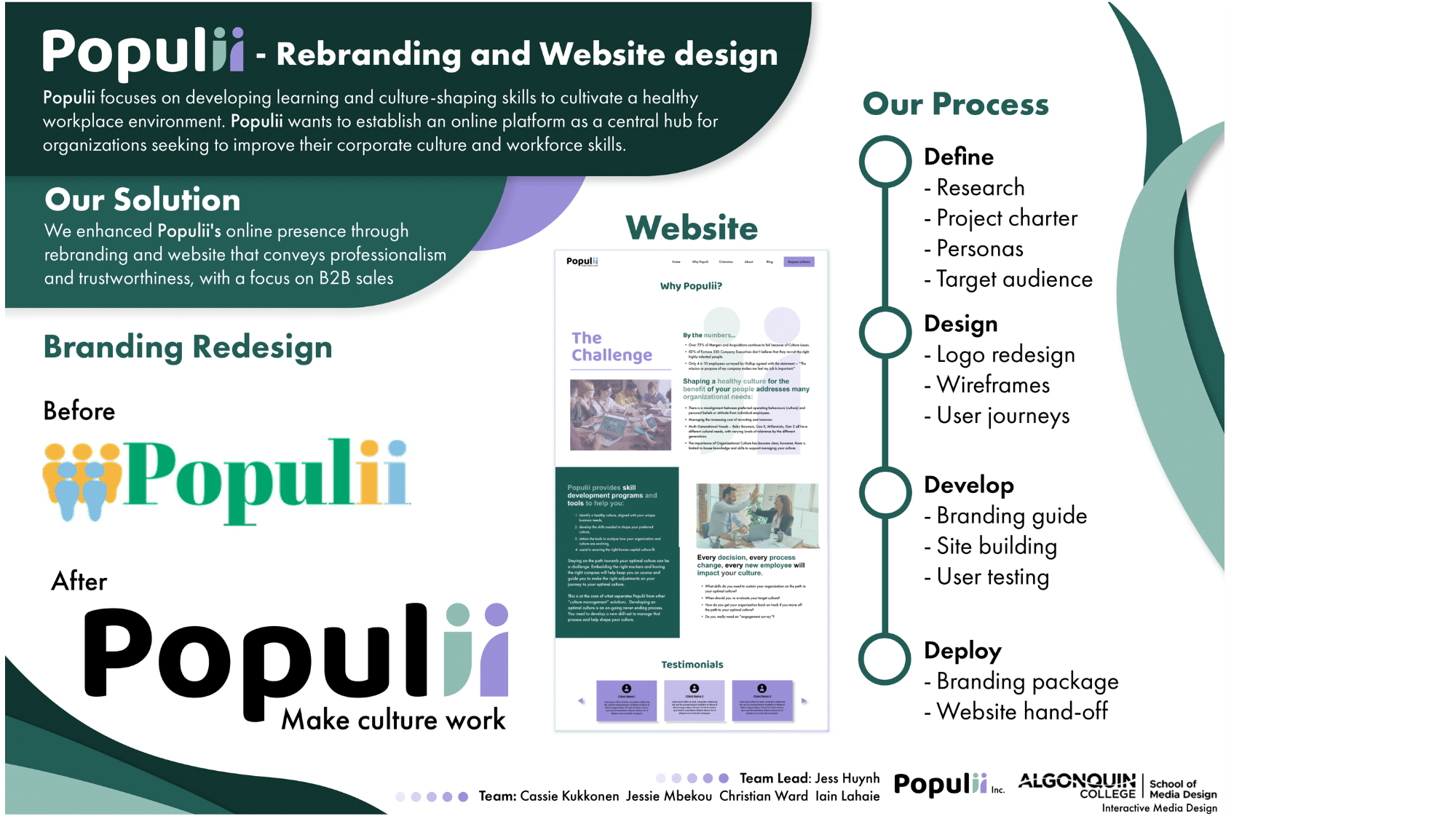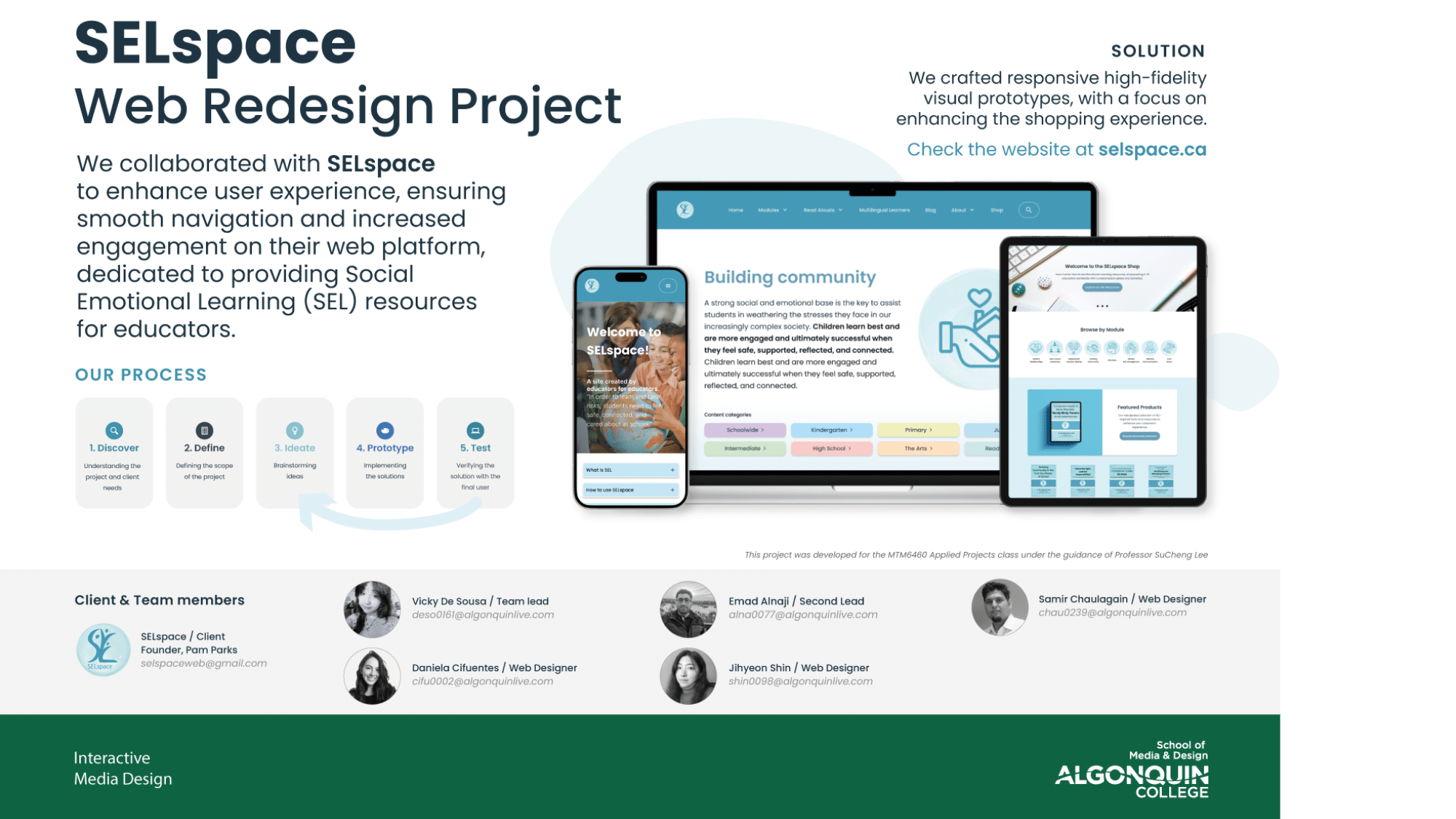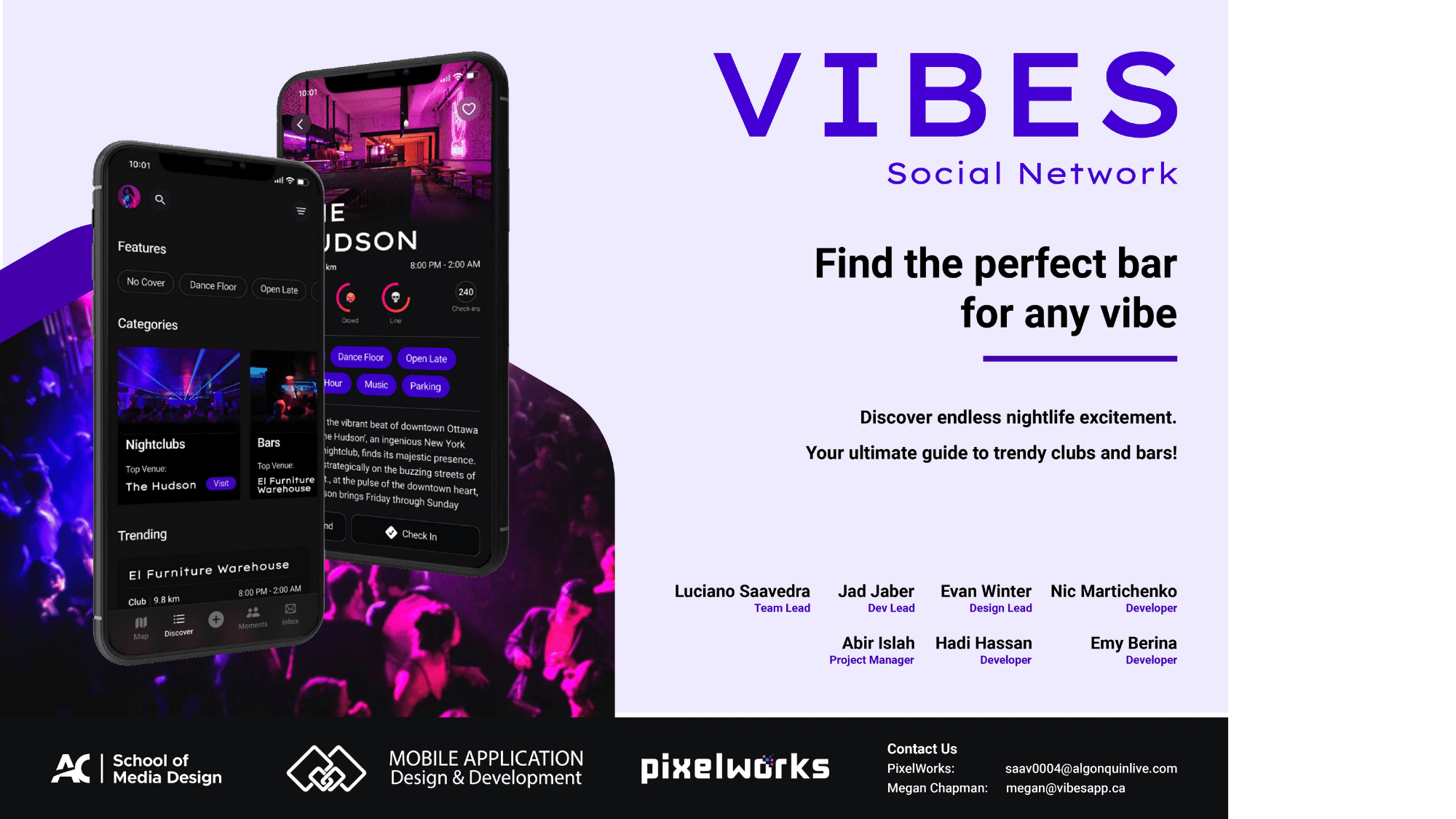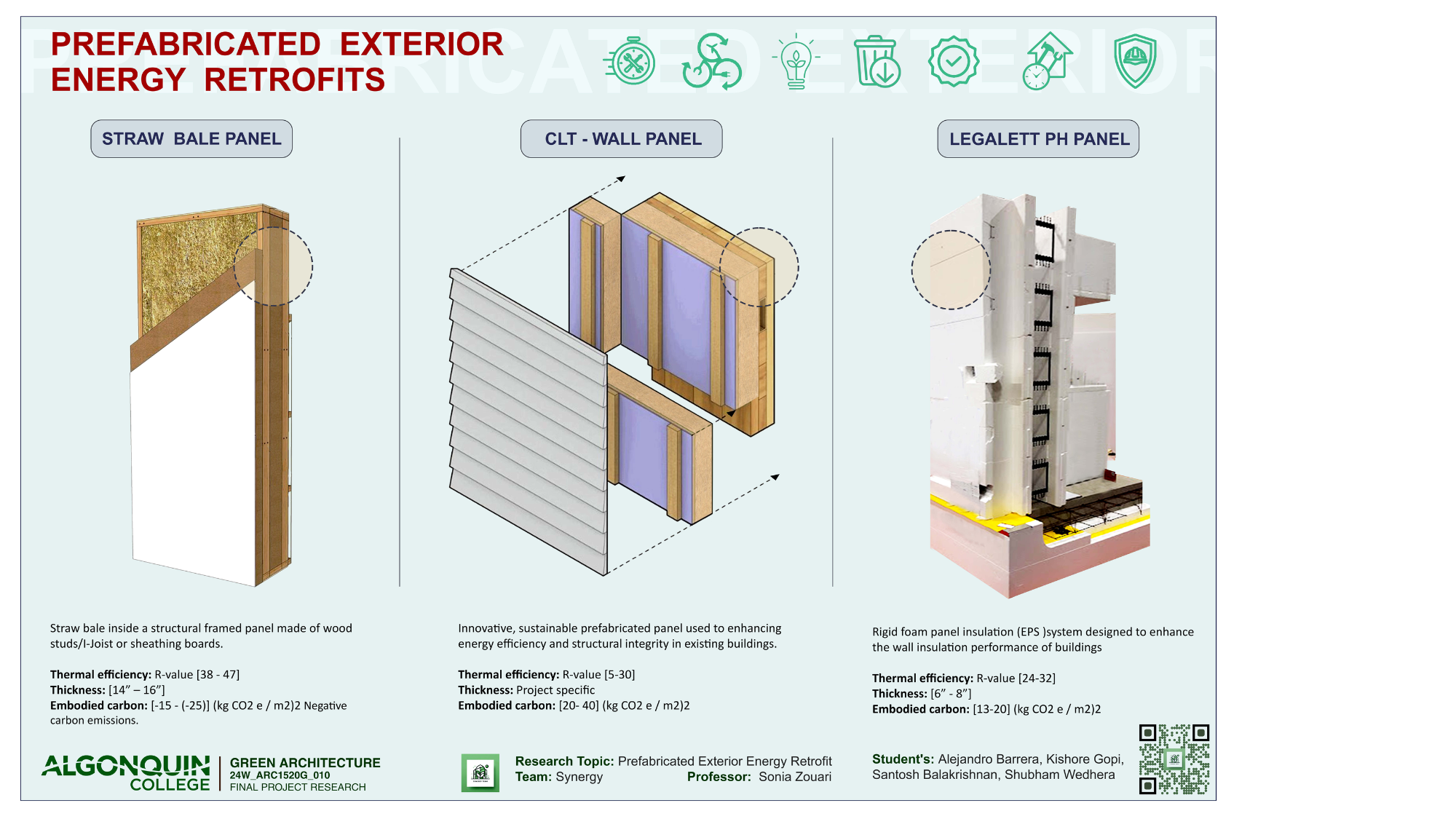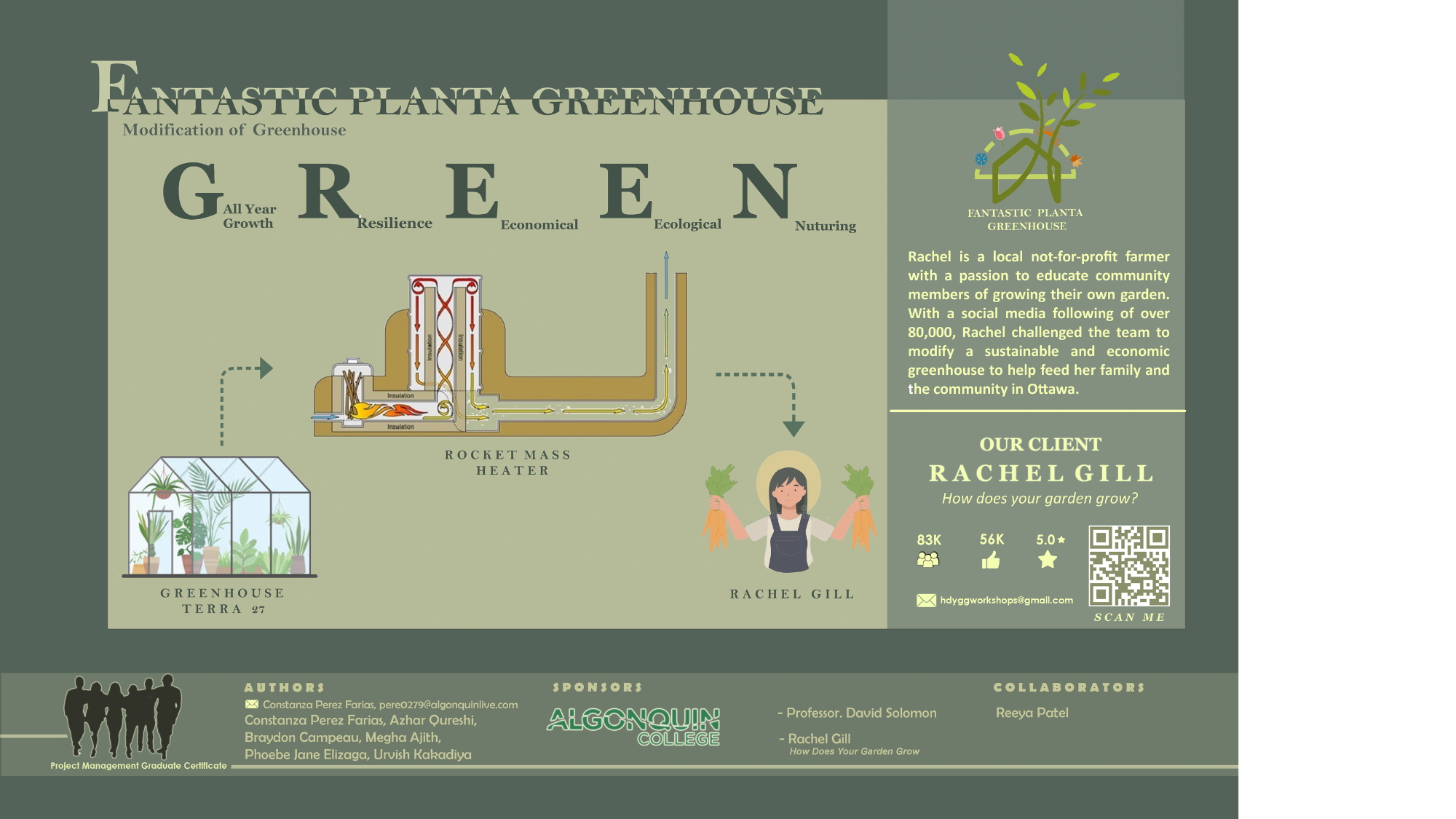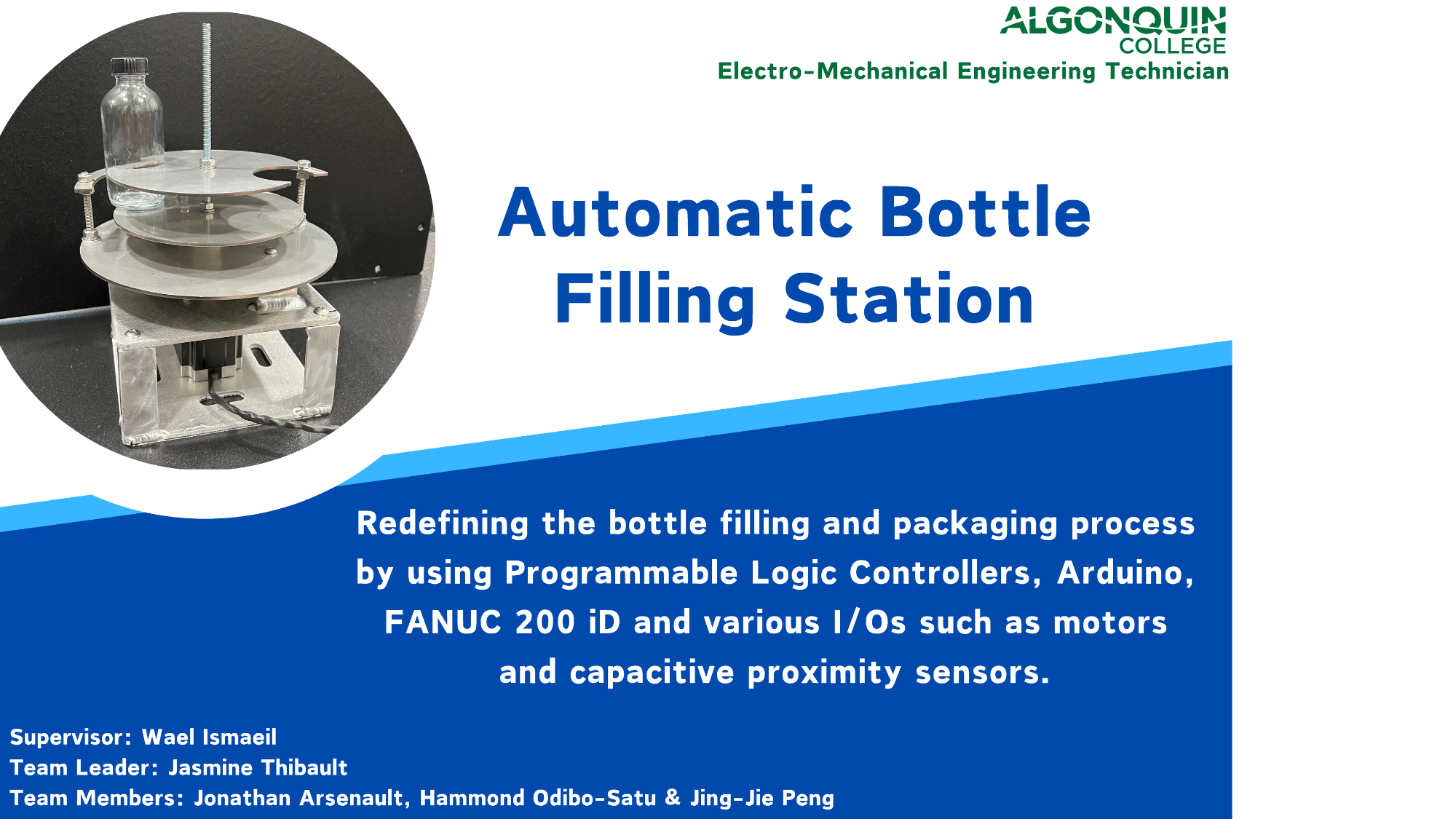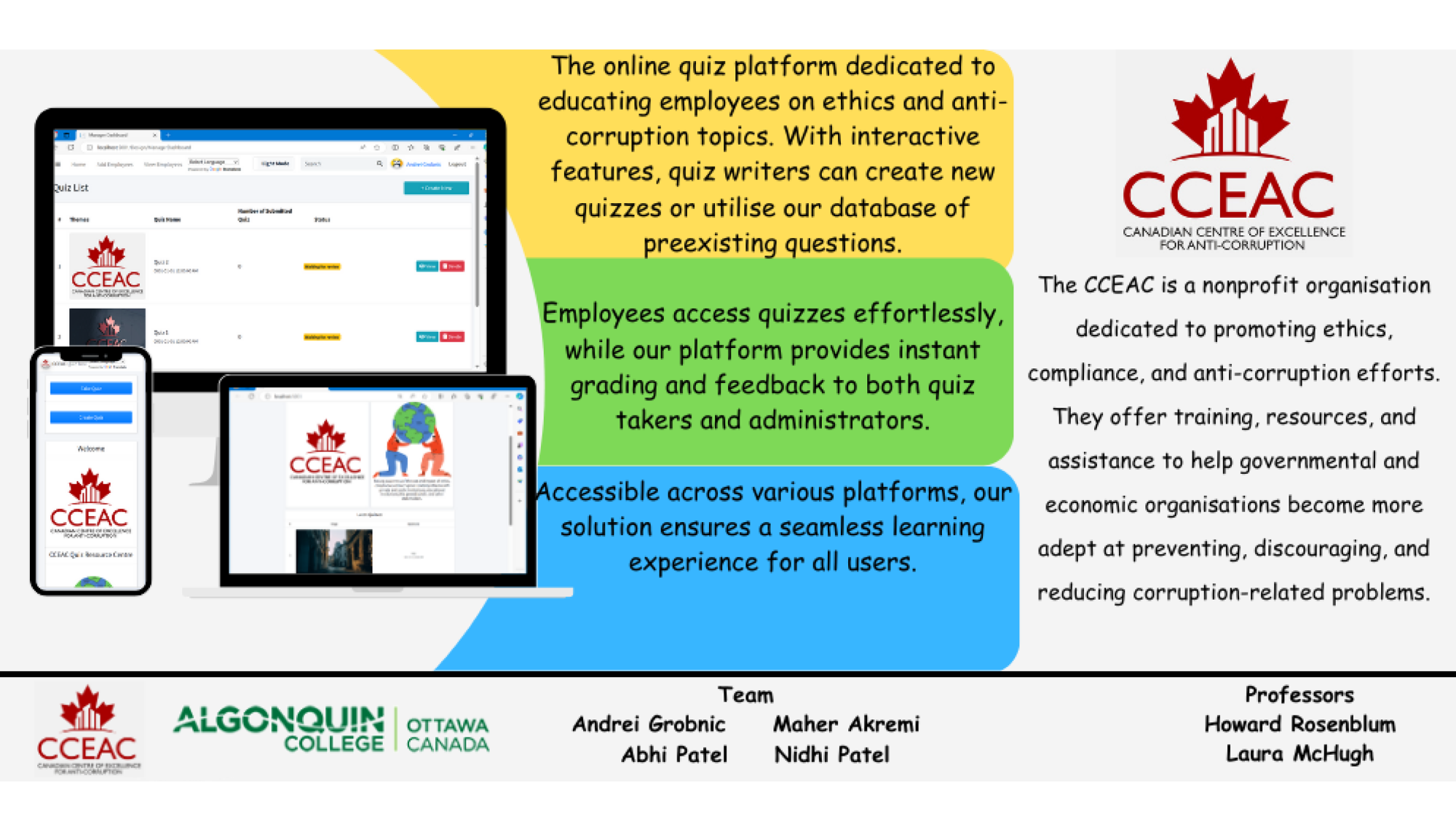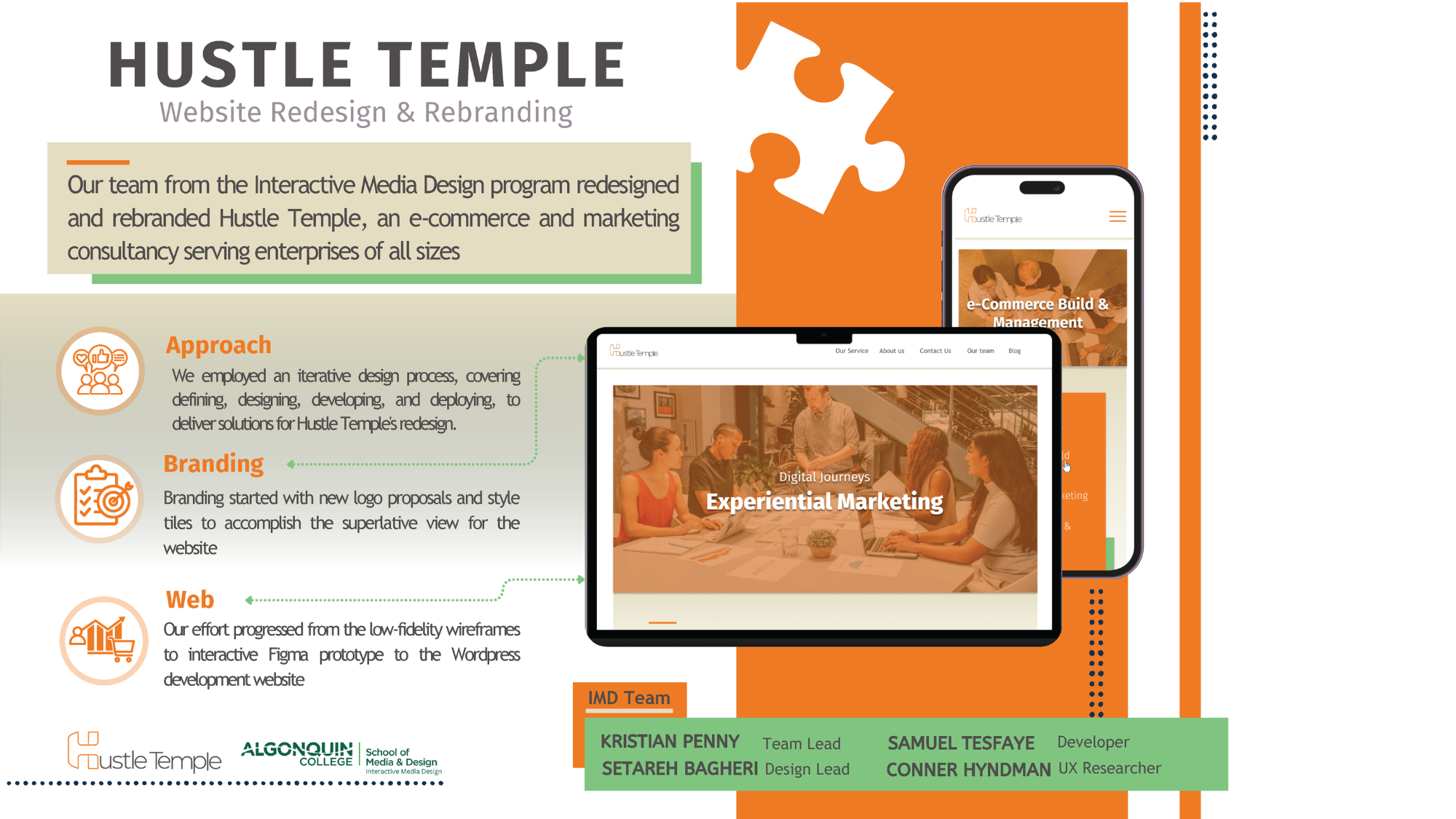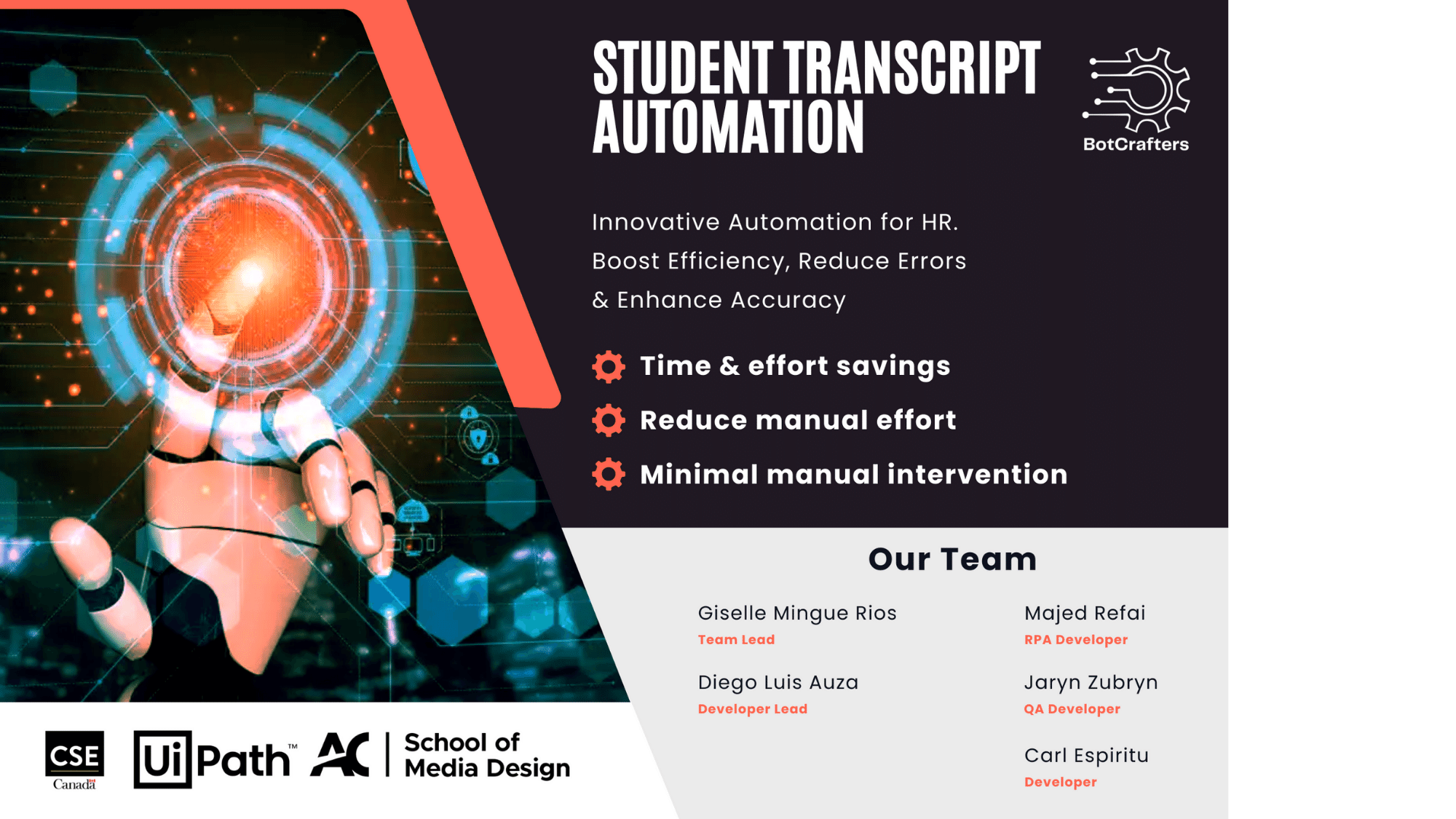
Project Summary:
Using UiPath RPA, our project automates uploading student transcripts from Outlook to the Jira management platform, which improves HR efficiency, reduces manual effort, saves time, and minimizes errors for Student Advisors at CSE.
| Client | Communication Security Establishment (CSE) |
| Professor(s) | Adesh Shah, Adam Robillard |
| Program | Mobile Application Design & Development |
| Student Team Members | Giselle Mingue Rios Diego Auza Majed Refai Jaryn Zubryn Carl Espiritu |
Project Description:
The Communication Security Establishment (CSE) Human Resources Student Program seeks to implement a Robotic Process Automation (RPA) solution using UiPath technology to automate the process of uploading student transcripts to Jira, an applicant management tool used by the department. This solution aims to enhance the operational efficiency of the CSE,
minimize manual intervention, reduce errors, and streamline the management of student transcripts.
The RPA solution will involve integrating with the MS Office 365 Outlook inbox and the Jira platform. The automation process will include the following steps:
Monitoring Outlook Inbox: The UiPath bot will monitor the designated CSE HR department’s Outlook inbox or folder for incoming emails.
Data Capture: When receiving an email with the subject line “Request for transcript” the system will capture the sender’s email address and last name.
Attachment Handling: The UiPath bot will save any attachments in the email, typically in .pdf or .doc/.docx format, in a temporary folder.
Uploading to Jira: The system will automatically upload the received attachment to the respective Jira task, matching the email address and last name from the email with the information associated with the issue.
Email Notification: The system will notify the student applicant, informing them their transcript has been received.
Throughout our two-year program, we managed to gain a solid understanding of various technologies. However, implementing robotic process automation (RPA) presented a challenge for our team as it was a new technology we had not learned in our program. To overcome this obstacle, we committed to learning RPA from scratch, taking advantage of training materials, online resources, guidance from our professors, and the UiPath partnership, with various courses and tutorials. This effort allowed us to effectively meet the requirements and learn UiPath and Jira in the desired time, leading to the automated solution’s successful development.
By implementing this RPA solution, the CSE Human Resources Student Program will improve the efficiency of its HR processes, save time and effort for Student Advisors, reduce the margin of error, and minimize manual effort in managing student transcripts. This automation initiative will enable the department to focus on more strategic tasks and provide a better overall experience for student applicants.

